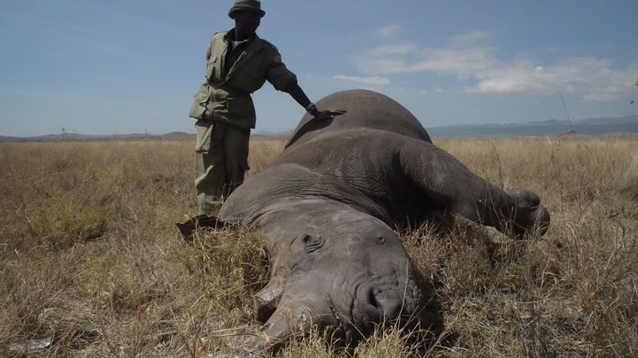‘The Last Animals’: Director Kate Brooks Exposes the Sorrow and Malice of Elephant Poaching

A photo still from “The Last Animals,” a documentary by Kate Brooks. Photo Credit: Kate Brooks.
GALO: In the film it’s said that people who poach have most likely had previous experience with wildlife, whether it’s having worked on a conservation area or otherwise. Is it really just money you think that drives these people, who supposedly care for wild animals, into poaching?
KB: I think it’s definitely driven by money. I really think it comes down to a matter of financial incentive.
GALO: The issue of elephant and rhino poaching has been circulating a lot in the nature news circle recently. Tons of studies have emerged saying how thousands of these animals are killed each year for their tusks and horns, and are verging on the brink of extinction. It’s even said that elephants will no longer be around by 2020 at this rate. What are you hoping that your film accomplishes? Do you think that it will make an impact on people in trying to stop this cruel trade in Africa?
KB: My film’s intended to raise awareness with the hope that that will lead to greater accountability. The only way that this poaching crisis is going to be brought under control is through organized, concerted international effort because it’s an international trade.
GALO: What do you think it would be like to have a world without elephants or rhinos? Even for those who aren’t exposed to these wonderful creatures in the wild, do you think it would have a strong influence on the remainder of the world?
KB: I think that it would be incredibly empty. You’d have the habitat for these animals and no animals. These animals also serve a purpose within the ecosystem. Most of the time people focus on elephants, and generally people don’t feel emotionally connected to rhinos. I spent a lot of time with rhino experts and learned a lot about the purpose of rhinos within the ecosystem — their dung is considered to be (and is) incredibly fertile, and so it helps the land. They also eat tons of grass, so people consider them to be giant lawnmowers. They’ll have a massive impact on the ecosystem, and the same thing with elephants. There’s someone who I interviewed who described a world without elephants as though it would be like taking color out of a picture, and I think it’s a very accurate description.
GALO: Most people think that the ivory and rhino horn trade exists only in Africa and Asia, but it’s actually prevalent in the United States as well. San Francisco remains the number two market for ivory in the nation, and New York has traditionally been a major hub for such products. In recent months, New Jersey banned the importation and sale of ivory and rhino horn. New York followed suit, with some exceptions to antique ivory. And California is now considering tighter state legislation. Do you think this action is strong enough to help eliminate the trade across the nation, and possibly even in Africa as well? What else can be done to put a stop to this?
KB: It’s a step in the right direction, but, unfortunately, permitting the sale of antique ivory creates confusion as well as legal loopholes for the black market to thrive. For example, there have been several large sales of “antique” ivory at auction houses that have proved otherwise. The only thing that is going to save rhinos and elephants is greater global law enforcement and the recognition that wildlife is not a material commodity for consumption or decoration.
GALO: Hilary Clinton even came out to say in November of last year that wildlife trade is linked to terrorism and the security of international borders. Based on what you’ve seen, how do you think poaching places a part in these issues?
KB: It’s a way to move money around. Right now wildlife trafficking is considered to be in the top four elicit trades in the world. Amongst that you have human trafficking, drug smuggling, and arms smuggling. It’s much easier to move rhino horns and ivory around, and typically speaking, the penalties for being in possession of those are so much less that it’s an easy way for people to funnel and move money around.
GALO: Do you have plans to continue to speak out on behalf of elephants and rhinos, whether it be through film, photography or other art forms?
KB: I imagine I will be working on conservation issues throughout the rest of my career.
GALO: If viewers take away nothing else than the inclination that poaching these majestic creatures is cruel, what message would you want to send them?
KB: What I hope comes out of the film is that people around the world will express their opinions about their stance on the ivory trade and it will lead to greater accountability across the world, [as we] are all in one way or another involved in the ivory trade — whether that means there being more restrictions on the ivory trade in Europe, such as those that have been imposed in the United States, or China taking a stance and basically implementing stronger penalties for illegal trade, and also maybe putting an end to their illegal trade altogether. The demand for ivory in China is what is leading this crisis.
Even if the poaching crisis is not under control, Africa’s rapid population growth remains a long-term threat in terms of there being space for elephants to exist. So with the threat of human population growth on ecosystems, it’s absolutely critical that the poaching crisis is brought under control very quickly.
The photo gallery below is best viewed in full-screen mode. To view it in full-screen, please click on the upper far right square.

